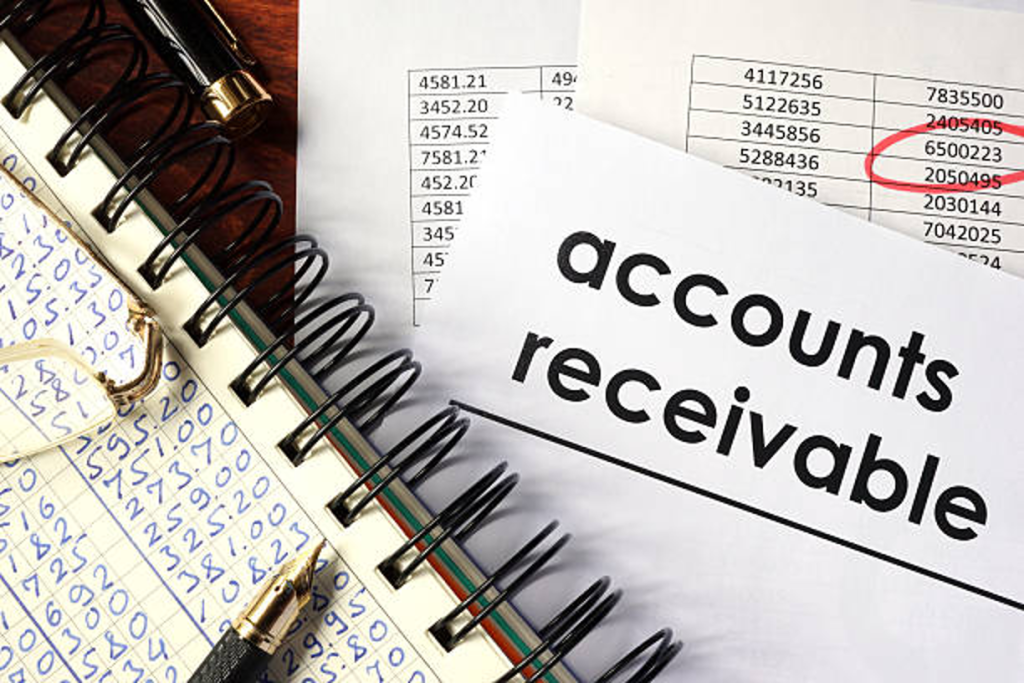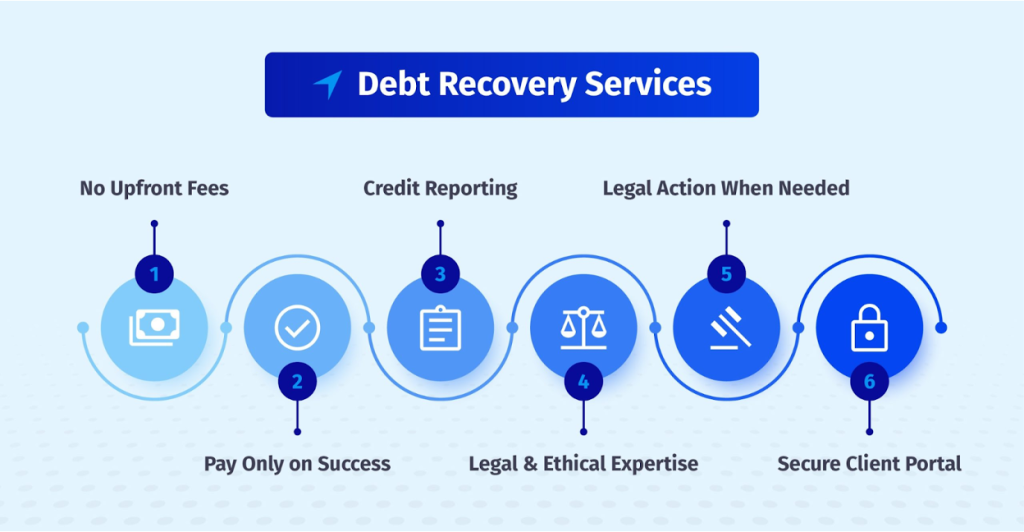- Make A Payment (866) 558-3328
- Client Portal
- Consumer Support

When reviewing accounts receivable and considering which outstanding invoices to escalate, many business owners ask whether there’s a minimum dollar threshold before sending debt to collections. The straightforward answer is no. There is generally no legal minimum amount that prevents a creditor from pursuing collection on an unpaid debt.
From a purely legal standpoint, businesses can send debts of any size to professional collection agencies. A $15 unpaid invoice carries the same legal standing as a $15,000 debt. Both can be reported to credit bureaus, pursued through collection efforts, and may affect the debtor’s creditworthiness.
However, while the law doesn’t impose minimum amounts, practical business considerations create informal thresholds that vary widely across industries and individual companies. The decision to escalate small debts involves weighing multiple factors that go far beyond whether collection is legally permissible.
|
Southwest Recovery Services: Get Your Money Back 20+ Years Experience | Texas-Based | Contingency Only – You Pay When We Collect
Built for Commercial Collections:
The Southwest Recovery Difference: ✓ Contingency only – no upfront costs ✓ Veteran collectors with respectful omnichannel outreach ✓ Priority sectors: trucking, logistics, contractors, oil & gas ✓ Clear reporting on account status and outcomes Trust & Results You Need: Nationally recognized ethical collections agency with 12 offices across six states. Compliance-first approach with no threats or guarantees. |
The choice to engage a collection agency isn’t purely about whether you can pursue a debt; it’s about whether you should. For B2B operations dealing with commercial accounts, several strategic considerations come into play.

The most fundamental consideration is whether the collection effort makes financial sense. Professional collection agencies typically operate on contingency fee structures, charging anywhere from 15% to 40% of the recovered amount depending on the debt’s age, complexity, and size. For a $50 debt with a 30% contingency rate, successful recovery means you’ll net only $35. When you factor in administrative time spent gathering documentation and processing the eventual recovery, the net benefit becomes even smaller. Many businesses find that debts below $100 or even $200 simply do not justify the administrative burden.
The nature of your relationship with the debtor significantly influences collection decisions. Long-term commercial clients who maintain substantial business relationships receive different treatment from one-time buyers or dormant accounts. If a valued customer who typically pays $50,000 monthly has a disputed $75 charge, sending that small amount to collections could jeopardize a lucrative ongoing relationship.
Individual small debts may seem insignificant, but their cumulative impact can be substantial. Businesses with high transaction volumes often find that numerous small unpaid invoices collectively represent significant working capital trapped in receivables. When you’re dealing with hundreds of accounts between $25 and $150, the aggregate total might reach tens of thousands of dollars. Professional collection agencies often accept bulk placements where the volume justifies the effort, even if individual account values are modest.
Your approach to small debt collection sends signals to your entire customer base. Businesses known for writing off small debts may inadvertently encourage payment laxity, as customers calculate that falling behind on smaller invoices carries no real consequences. Industry standards also matter. In sectors where tight margins make every dollar count, such as logistics, trucking, or wholesale distribution, pursuing smaller debts is standard practice.
Professional collection agencies have developed efficient approaches to handling accounts across the value spectrum. Understanding how agencies evaluate and process debts helps businesses make informed decisions about when to escalate collection efforts.

The contingency model aligns agency incentives with client success because agencies only earn fees when they successfully recover funds. This structure means agencies carefully evaluate which accounts offer reasonable recovery prospects before acceptance. Contingency rates typically decrease as debt amounts increase and increase as debts age. A $500 debt less than 90 days old might carry a 20% contingency rate, while a $75 debt that’s 180 days past due could command 35–40%.
Many agencies offer pre-collection services designed specifically for smaller debts or newer past-due accounts. These programs typically involve sending formal collection notices on agency letterhead without initiating full collection procedures. The psychological impact of receiving correspondence from a collection agency often motivates payment from debtors who have ignored your internal reminders. Pre-collection services usually cost 5–10% of recovered amounts, which is significantly less than full collection contingencies.
Modern collection agencies leverage technology to make pursuing smaller debts more cost-effective. Automated dialers, SMS messaging, email campaigns, and online payment portals reduce the labor intensity of collection work. AI-powered systems help agencies prioritize accounts based on payment likelihood, optimize contact timing, and personalize messaging strategies. These allow professional agencies to profitably pursue smaller accounts that would have been uneconomical using traditional collection methods.
Understanding that even small commercial debts can be sent to collections should inform how businesses manage their accounts payable and vendor relationships.
Commercial debts sent to collections can appear on business credit reports, and these negative marks affect the ability to secure vendor credit, qualify for business loans, and negotiate favorable payment terms. Once debts enter collections, additional fees and interest typically accumulate. Collection agency fees, legal costs if litigation becomes necessary, and contractual late payment penalties can substantially increase the total amount owed.
For businesses that value ongoing vendor relationships, allowing even small debts to reach collections damages trust and future business opportunities. Proactive communication with creditors when payment problems arise (or before accounts reach collection status) typically yields more favorable outcomes than avoiding the issue until escalation becomes necessary.

Southwest Recovery Services brings over 20 years of specialized experience to commercial debt collection, with a strategic approach that makes pursuing accounts viable across the value spectrum. We’ve developed systems and methodologies that deliver results on accounts ranging from a few hundred dollars to six-figure commercial debts.
Operating exclusively on a contingency basis means clients face zero upfront costs and pay only when we successfully recover funds. This risk-free model enables businesses to establish accounts without incurring uncertainty.
Our technology infrastructure combines AI-guided tracking systems with experienced collectors who understand industry-specific payment practices. This hybrid approach ensures persistent, professional contact across multiple communication channels such as phone, email, SMS, and mail without the aggressive tactics that damage business relationships.
We specialize in commercial collections for businesses in the $10M–$100M revenue range, with particular expertise in trucking, logistics, construction, oil and gas, and wholesale distribution sectors. This industry focus means we understand the payment cycles, seasonal factors, and business pressures affecting your customers’ payment capacity.
With 12 offices across six states, we maintain the geographic coverage necessary for effective nationwide collections while providing the personalized attention of a regional agency.
Contact Southwest Recovery Services Now
While there’s no universal standard, many collection agencies set informal minimums between $50 and $200 for individual accounts, primarily driven by cost-effectiveness considerations. However, agencies often accept smaller debts when they are placed as part of larger portfolios or batch placements, where the volume justifies the effort. Pre-collection services typically have lower minimums since they involve less intensive effort than full collection procedures.
The impact depends largely on how collection activities are conducted. Professional agencies that use respectful, diplomatic approaches typically preserve business relationships better than aggressive tactics. The key is working with agencies that prioritize relationship preservation and only escalating accounts after reasonable internal collection efforts have been exhausted.
Most B2B experts recommend exhausting internal collection efforts for 60–90 days before engaging professional agencies, though this timeline may be shorter for smaller accounts. During this period, send multiple payment reminders, make personal contact attempts, and escalate to management-level communications. The optimal timing balances recovery probability against the costs of continued internal efforts.
Several alternatives exist between internal collection efforts and full agency engagement. Pre-collection services send formal notices on agency letterhead without initiating full collection procedures, often motivating payment at lower cost (5–10% versus 15–40% contingencies). Payment plans allow debtors to resolve small balances over time without collection escalation. Negotiated settlements where you accept partial payment to close accounts may be appropriate for disputed amounts.
At Southwest Recovery Services, we offer comprehensive commercial debt collection expertise backed by over 20 years of experience, handling accounts of all sizes through a customized, relationship-preserving approach. Operating strictly on contingency means you pay nothing unless we successfully recover your funds, eliminating upfront risk. With specialized focus on B2B collections for companies in the $10M–$100M revenue range and deep expertise in trucking, logistics, construction, oil and gas, and distribution sectors, we understand your industry and are positioned to deliver the best service.


We make it fast and easy to refer past due and delinquent accounts to our professional recovery agents. You decide the range on what you will accept on each case, and you ONLY pay a percentage of what we actually collect to resolve the case. Ready to get started, or want to learn more? Fill out this form and a dedicate account manager will call you to get started.